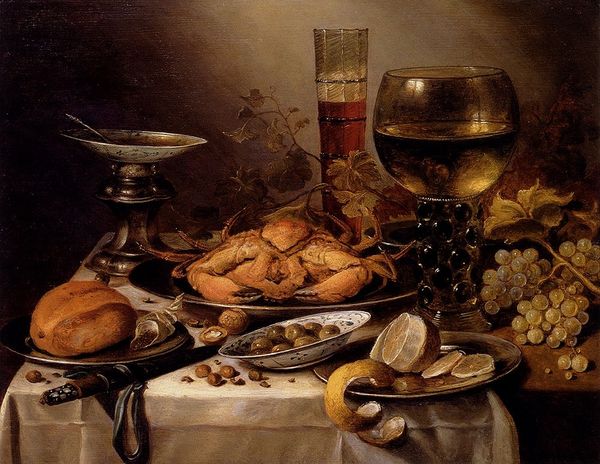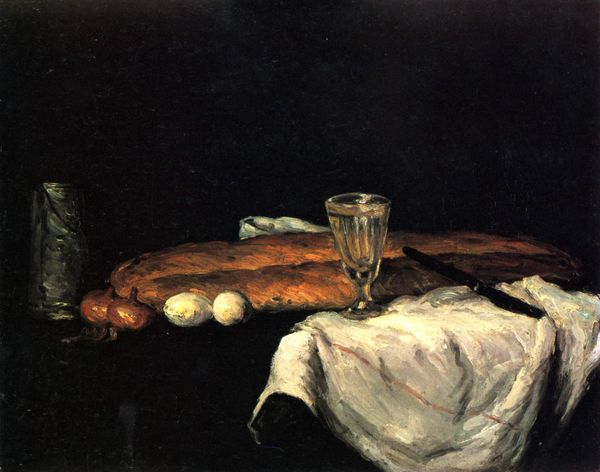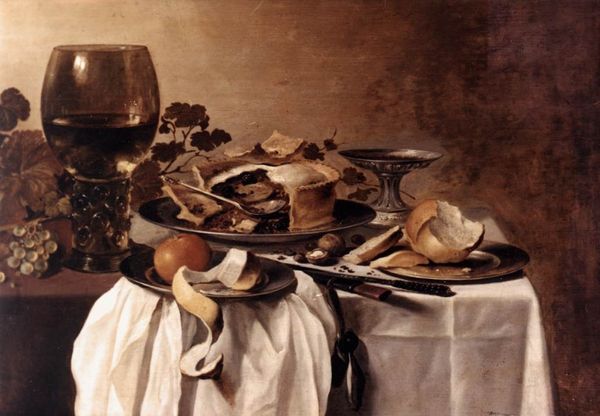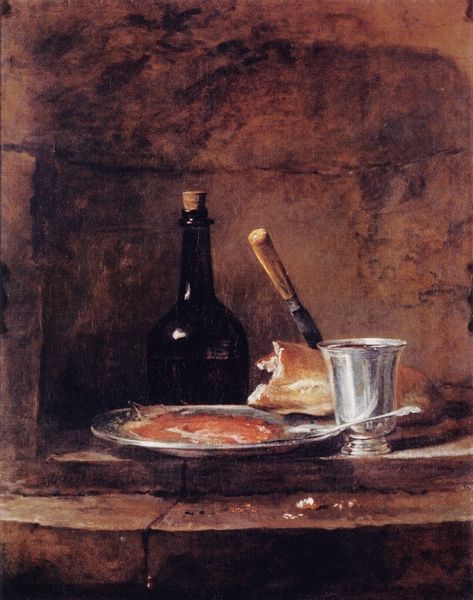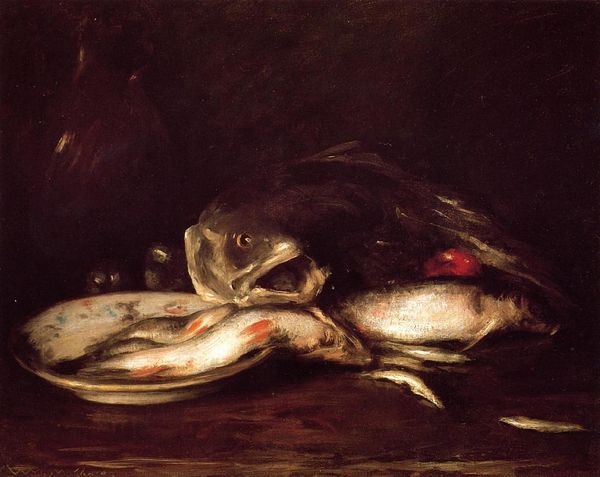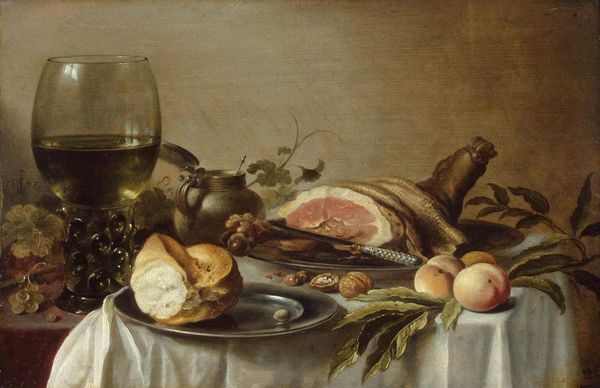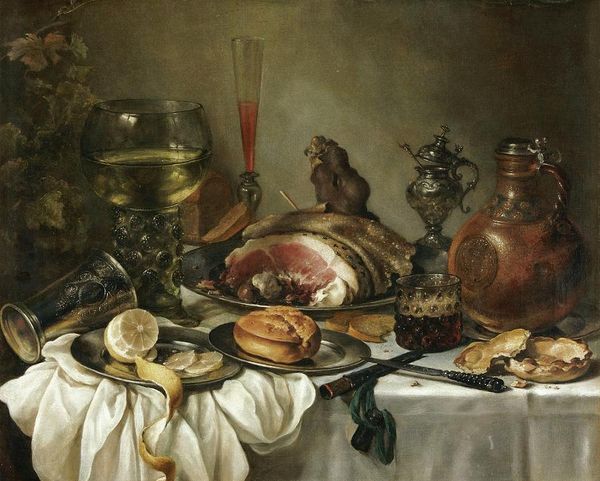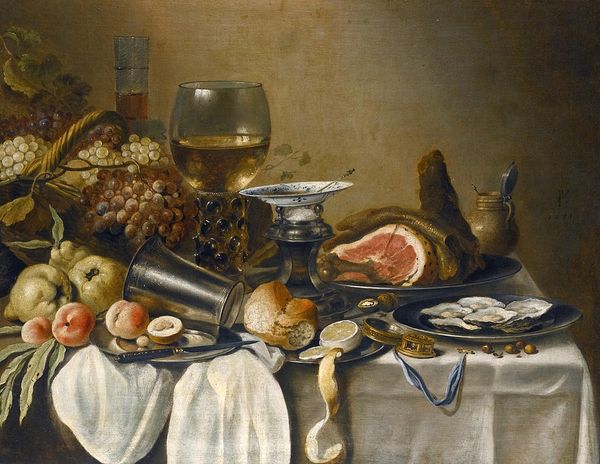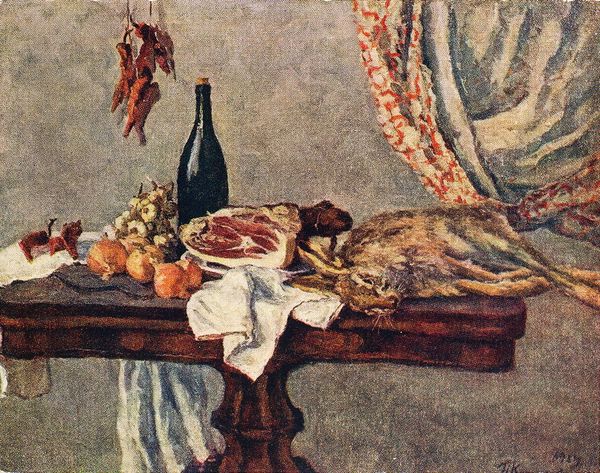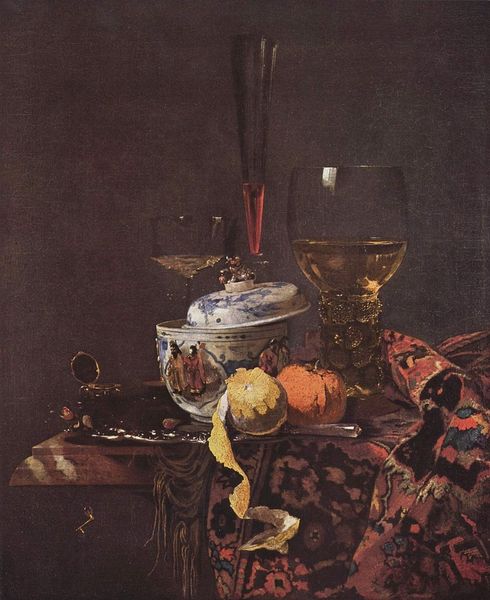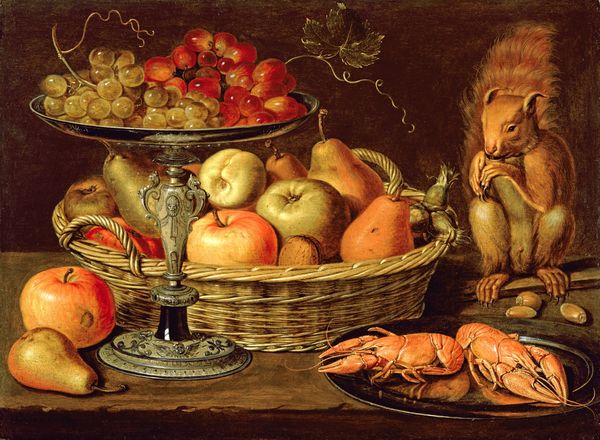
painting, oil-paint
baroque
dutch-golden-age
painting
oil-paint
oil painting
genre-painting
realism
Copyright: Public domain
Editor: So, here we have Pieter Claesz's "Breakfast Piece" from 1646. The still life is rendered in oil, and the lighting gives a somewhat somber, reflective quality to everyday objects. The peeled lemon is my favorite part. What stands out to you in this painting? Curator: Beyond the immediate, ask yourself what does 'breakfast' represent here? Is it just sustenance, or something more symbolic? Note the scattered elements: the overturned glass, the partially peeled lemon. They intimate a pause, a fleeting moment snatched from time. Editor: So the breakfast isn’t really *about* breakfast? Curator: The objects, particularly the lemon peel spiraling downwards, visually suggest a sense of temporality and transformation, don't they? This can symbolize life's fleeting nature. Consider also the wine glass and grapes. Wine, frequently seen, links to transformation. Editor: Ah, so they aren’t just randomly selected. What about the fish? Is there symbolism there too? Curator: Yes. Consider religious associations. The fish can carry weight signifying faith. In the context of the Dutch Golden Age, these images can be thought-provoking messages about material enjoyment and awareness of mortality, reminding viewers of the transient aspect of worldly things and inspiring them to reflect on the value of the spiritual instead of worldly pleasures. These aren't merely representations of a meal, they're layered contemplations. Editor: That's fascinating. I didn't realize there was so much more beneath the surface of a simple breakfast scene. Thanks for showing me all that. Curator: My pleasure. The surface is where meaning begins, but the symbols... the symbols are where understanding deepens.
Comments
No comments
Be the first to comment and join the conversation on the ultimate creative platform.
